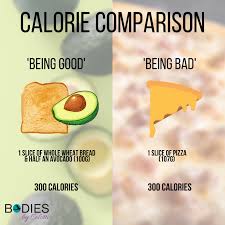
This process was pioneered by the Romans, Indians, and Chinese ancients. Buddha instructed the world about salt storage and collection in the early fifth century BC. To collect the brine, the Romans used ceramic containers known as briquetage. Workers sifted the concentrated salt out of the water and washed it away. Then they poured the brine into shallow saucepans and set them onto clay pillars. They then sold the sea salt powdered to dried workers to the New World colonists. In the New World slaves from Africa were brought to rake salt on several islands in West Indies such as the Bahamas and Turks and Caicos Islands.
While most people know about table salt, not everybody knows how sea Salt is made. Although table salt contains sodium chloride as its main ingredient, sea salt can also contain other minerals such as magnesium and iron. These minerals are in small quantities in sea salt. They are also present in salt crystals. Although it is best not to consume this mineral in excess, adding a small amount to your dishes will provide additional nutrients and nutrition.

Sea salt is the most commonly used type of salt. It comes from warm climates. Sea salt is extracted by filling manmade swimming pools with salt water. The water then evaporates. The crystals are left behind after the water has evaporated from the manmade pool. These manmade pools are called "salt work". The process of harvesting salt takes several billions of years, and the salt is harvested in different ways.
Sea salt production is complicated. First, you need to extract seawater. The first step is to evaporate the water from the ocean. The water is left in the water for a few days to dry and to concentrate. Once the process is complete, sea salt is ready for sale. The final product can be labeled either as refined or unrefined. The unrefined sea sal can be either grey or contain trace minerals and marine bacteria.
The process of harvesting salt is simple. The salt crystals, which form at the bottom in the water, are almost dry. To remove impurities, you can pour off water and scrape off the salt's top layer. This is an excellent way to collect sea salt. It's very inexpensive and readily available. It is easily available in many parts of the world. Salt can be used for human consumption after it is harvested. You can use it in many ways.

Extracting salt from seawater is similar to extracting salt water. The process is, however, different for each. Some salts come from the sea while others are taken from the earth. Chemicals are used to extract the salt in this case. To get the iodine, the minerals are removed from the sea. Salt is also processed to get rid of minerals that make it edible.
FAQ
Why is exercise important for weight loss?
The human body has incredible capabilities. It was created to move. Move your body to stay healthy, whether you are running, swimming, biking or lifting weights.
Exercise helps to burn calories and improve muscle tone. This can make you feel more positive both physically and mentally. Many people have heard the phrase "exercise is important to weight loss." But what does it do?
-
Exercise can increase metabolism. When you're active, your body will use energy. When you move, your heart beats quicker, blood flows to your muscles, oxygen is absorbed by your lungs, and blood flows faster to your muscles. All these activities use energy. Your metabolic rate increases, which means you'll burn more calories while exercising. You can calculate how many calories your body burns by doing physical activity.
-
Exercise reduces appetite. Working out will help you to eat less and make you feel fuller all day.
-
Exercise increases strength. Muscle tissue takes more energy to work than fat tissue. If you build muscle mass, you will require less food to maintain your weight.
-
Exercise releases endorphins. Endorphins make you smile. They are released when you exercise. Endorphins have been shown to prevent pain signals from reaching your brain. This can give you a sense of well-being.
-
Exercise boosts self-esteem Exercise regularly leads to higher self-esteem. People who exercise regularly live longer and healthier lives.
Make small changes to lose weight. Try adding one of these tips to your routine today.
How often do people fast every day?
Most people who follow a ketogenic diet fast once per week. Some people fast twice weekly. Others fast three times a week.
The length of each fast varies too. Some people fasted for 24 hours and others for 48 hours.
Some people can even travel for up to 72 hours. But these extreme cases are very rare.
How long does it usually take to lose weight
It takes time and effort to lose weight. It usually takes six months for you to lose 10%.
You shouldn't expect weight loss overnight. Your body needs time to adjust to new dietary changes.
This means that your diet needs to be slowly changed over several days, or even weeks.
Also, you should stop taking fad diets because most of them don't work. Instead, you should change your daily routine.
Consider, for instance, that you often eat unhealthy snacks late at the night. You need to reduce this behavior.
Instead, you should eat healthier meals earlier in the evening. This will help you avoid snacking at night.
It is important to drink lots of water throughout the day. Water helps to keep your body hydrated and prevents dehydration. Dehydration can make you feel tired and weak.
Drinking lots of water throughout the day can help you stay energized, focused, and alert.
Relaxing activities can help reduce stress. Spending time with loved one could help you reduce stress.
You can also listen to music or read books.
These activities can help you to unwind after stressful situations. They can also help improve your moods and self-esteem.
So, when you're trying to lose weight, you should always think about your health first.
Your physical fitness is an indicator of overall health. So, if you want to get fit, you should start with proper nutrition and regular exercise.
What Amount Of Exercise Is Needed For Weight Loss?
There are many factors that impact the amount you exercise to lose weight. However, the majority of people require at least 30 minutes of moderate exercise five days a week.
The American College of Sports Medicine recommends 150 minutes of moderate-intensity aerobic activity each week, spread over three days.
If you are trying to lose 10 pounds, 300 minutes of moderate intensity exercise per week is a good goal. This includes activities such swimming laps (brisk walking), biking, dancing and playing tennis.
If you're just starting out, consider doing 20 minutes of vigorous activity thrice weekly. It could be sprinting, lifting weights, jumping rope or fast walking.
Aerobic exercise also helps burn calories and build muscle mass. Muscle burns more calories per calorie than fat. You may be able to achieve your goal quicker by building muscle and losing fat.
How long do I need to fast for weight loss?
It's not as easy to answer as you might think. When determining the number of days you should fast for optimal fat reduction, there are many factors to consider. These are:
-
Your age. Your age. Intermittent fasting is more difficult for younger people under 40. You have less time to recover each day from fasting. Alternately, if your age is over 60, intermittent fasting might prove too challenging because you may not have enough energy to last for extended periods of time.
-
Your current body composition. Your current body composition. If you have a lot more muscle mass than you need, then you will likely be more successful with longer fasting periods. You may find shorter fasting more beneficial if your muscle mass is low.
-
How active you are. You may need to increase your fasting time if you exercise often. This will ensure you get enough rest between workouts.
-
Your health history. Some people with medical conditions like diabetes, heart disease, cancer, etc., may require additional fasting monitoring.
-
How can you manage stress? Stressful situations can make us eat more. This problem can be avoided by increasing the length of your fasting periods.
-
What type of diet do you follow? Certain diets, like ketogenic diets, may require even longer fasting periods.
-
How much sleep you get. Insufficient sleep has been associated with decreased metabolism and increased appetite. You may need to experiment before you discover what works for you.
-
The amount you eat of protein. Consuming more protein helps to stabilize blood sugar levels. This could lead to lower insulin levels. This would allow one to fast for longer periods.
-
No matter if you are trying gain or lose weight. People trying to gain weight often need longer fasting periods than people trying to lose weight.
-
How many calories do you consume in your fasting windows? Fasting for fewer calories per days may lead to greater fat loss than fasting with more calories.
-
Your overall fitness. A person who is very fit will burn more calories every day because they are faster.
-
Your gender. Men have greater appetites than women and may need to fast longer. Women tend to have smaller appetites so they might only need to fast for 20-30 minutes each morning.
-
Your lifestyle. Are you someone who does a lot of exercise? Do you work out several times a week? Does your job involve sitting at a desk all day long? All these factors can have an impact on how much time you should speed.
-
What amount do you spend on food each month? Not all healthy food means you need to spend a lot more on groceries. You can save money by buying whole grains instead of white bread, fruits instead of candy bars, and lean meats instead of fatty cuts.
-
It's important to manage your hunger. You might not have to fast as much if your hunger isn't a problem.
Statistics
- A 12-week study in 20 women with obesity found that walking for 50–70 minutes 3 times per week reduced body fat and waist circumference by an average of 1.5% and 1.1 inches (2.8 cm), respectively (healthline.com)
- One study in 9 active men found that HIIT burned 25–30% more calories per minute than other types of exercises, including weight training, cycling, and running on a treadmill (18Trusted Source (healthline.com)
- According to Harvard Health, it's estimated that a 155-pound (70-kg) person burns roughly 112 calories per 30 minutes of weight training (5). (healthline.com)
- One 6-month study showed that simply doing 11 minutes of strength-based exercises 3 times per week resulted in a 7.4% increase in metabolic rate, on average. (healthline.com)
External Links
How To
How to lose weight quickly
There are many methods to quickly lose weight. Many people find them ineffective, and even unsustainable. The best way to lose weight fast is through dieting and exercise. Your daily calories should be less than your daily intake. This means eating fewer calories than what your body burns during normal activities. If you want to lose weight fast, you must reduce your calorie intake.
You should avoid foods that contain large amounts of fat and sugar since they increase your appetite. Drink plenty of water each day. It helps to keep your body hydrated and maintains your metabolism at its highest. Combining these three elements together will give you results faster than you thought possible.